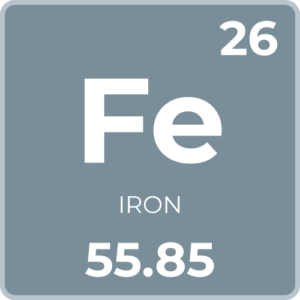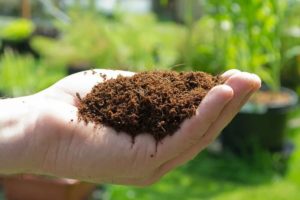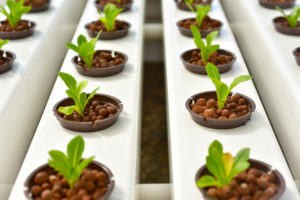Hydroponics is a favorite method among growers. It speeds up crop growth and increases yields. Plants traditionally grown outdoors are making their way into hydroponic systems, not the least of which is cannabis. This hardy plant is often called weed because it shows the same stubborn, vigorous growth, and ability to adapt to nearly any conditions. While it thrives in many conditions, when you grow hydroponic cannabis, you can create a fully optimized harvest.
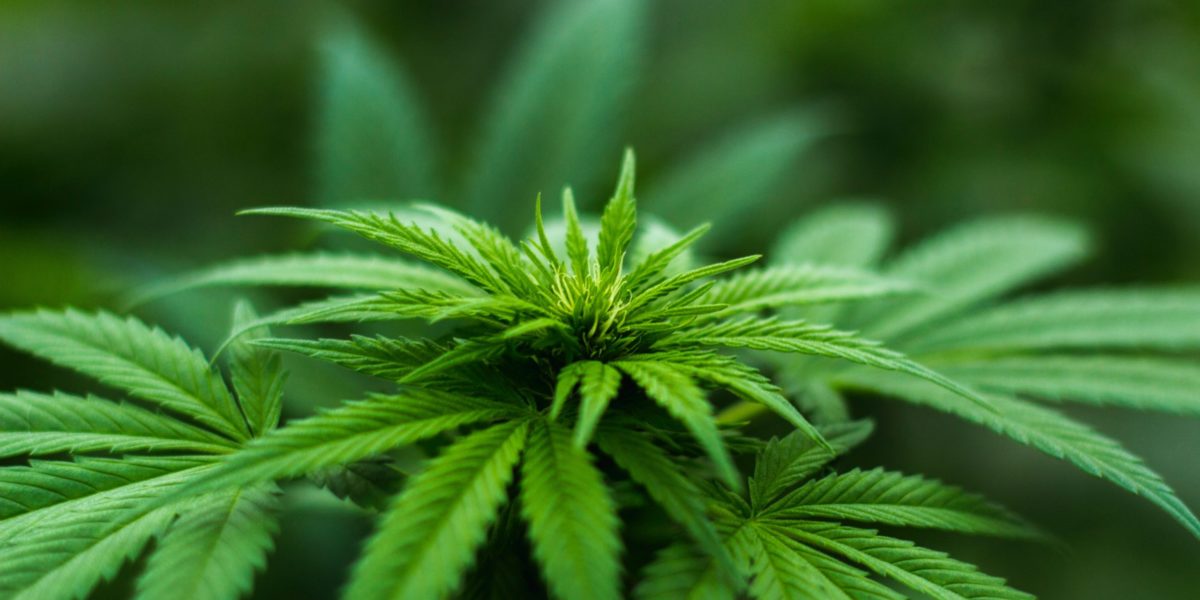
Why Use Hydroponics?
True enough, cannabis does well outdoors growing in soil, so why choose to grow hydroponic cannabis? Afterall, some cultivators even grow indoors with soil. There are plenty of reasons water culture is ideal.
Cannabis is a nutrient hungry plant. Poor soil quality produces rather disappointing plants. It’s difficult to get a handle on soil quality, especially if you don’t know what you’re starting with. While you can tweak every little aspect of your nutrients and pH in a hydroponic system, it’s hard to do that when you’re growing in soil. If you’re not careful, soil can bring pests and pathogens to otherwise healthy plants.
Soil isn’t exactly convenient when you grow indoors either. If you have a large grow, that’s a lot of heavy, messy soil to deal with. When your harvest is over, you often cannot reuse the same soil, which means a large replacement before you can grow again.
Hydroponic systems allow you complete control over your grow environment, and the nutrients your plants get. When you achieve the ideal conditions, plants absolutely thrive. You speed up the growth progress and have a significantly shorter time until harvesting. Not only that, you get the best yields, and most potent crops.
The Basics
Cannabis requires a bit more care than other hydroponic plants, like herbs or greens. The plants’ needs change throughout their lifecycle, and you need to cater to that. We have a lot of nitty gritty details to get into, but first, let’s start with the basics.
- Nutrients often measured in PPM (Parts Per Million)
- Optimal PPM and EC increase with age until late flowering
- Lighting must be changed to start flowering
- pH raises slightly with age
- EC ranges: 0.5 to 2.0
- Ideal ambient temperature: 75 degrees Fahrenheit (23.8C)
- Ideal nutrient solution temperature: 65 degrees Fahrenheit (18C)
- Higher humidity for young plants (60-70%)
- Humidity drops to around 40% during blooming
- Optimal pH: 5.2 (for best nutrient uptake)
- Main strains: Indica and Sativa
- Indica strains are smaller, easier to grow
- Sativa strains are more potent, but more difficult
- Total time to grow- up to 16 weeks (4 months)
- Start from seeds or clones
Recommended Equipment
Ideal Hydroponic Setups
Cannabis grows well in a variety of hydroponic setups. The most common systems used to grow hydroponic cannabis include:
- Ebb and flow
- Aeroponics
NFT, Nutrient Film Technique – (especially in commercial operations) - DWC, Deep Water Culture
- Aquaponics
Growing medium
When it comes to growing medium, you have a lot of choices too. If you’re not familiar with the different kinds, this guide will get you started.
So, how do you choose which hydroponic system and growing medium you will use?
Chances are, you already have a basic hydroponic system setup. If you don’t, and want to create your own, this guide shows you what you’ll need. The type of system you use depends mostly on the space you have available, and your experience level. That said, cannabis grows well in nearly any setup.
Choosing the best growing medium for cannabis
Choosing the right growing medium is important. Often, your decision is based (at least in part), on the type of hydroponic system you have. While you might not use coco coir in an ebb and flow system, it’s great for drip systems. Likewise, if you use a DWC (Deep Water Culture) system, your top choice is clay pebbles. If you do use a Deep Water Culture system for growing, make sure you use an air stone too. It helps oxygen get to the root system and keep roots healthy.
The best growing medium for cannabis has an even mixture of absorption and aeration, with moderate drainage. Combining two different types of grow media is an easy way to get the best features from each. For example, clay pebbles are an ideal pair for coco coir, or perlite.
What Kind of Environment Do You Need?
Using an enclosed space, like a grow tent or grow room allows you the most control over the environment. You can ensure that heat and light aren’t lost and keep humidity levels in check. This is especially important when your plants reach the flowering stage. You don’t want light leaking in when your plants should have extended hours of darkness.
Temperature
Cannabis does well with fairly warm temperatures. During ‘day’ hours (with grow lights on), try to keep your temperature between 72 to 76 degrees F (22-24.5C). When the lights are off, lower the temperature slightly, to around 66 to 70 degrees F (18.8-21C). Of course, this can vary between different strains, so make sure the heat or cold isn’t stressing your plants.
Nutrient solution temperatures should, ideally, be between 60 to 68 degrees F (15.5-20C). If nutrient solution is too hot or cold, it’s more difficult for roots to take in nutrients.
EC and pH
One thing that makes cannabis more labor intensive is the changing needs as the plant matures. EC, pH, humidity, and lighting change as plants grow and are ready for flowering.
pH levels should rise slightly as the plant ages, as should nutrient concentration (EC or PPM). Nutrient density should rise in small, slow increments each week. When plants mature and have a couple of weeks left before the harvest, nutrient levels should drop again.
Humidity
Young plants need higher humidity. Ambient humidity around 60% is ideal. Once plants enter the blooming (flowering) stage, dial down the humidity to about 40%. Humidity can be difficult to control, but it’s easier when you have the right tools. A humidifier helps raise humidity, while a dehumidifier decreases it. Keep a hygrometer in a central area of the grow room. Hygrometers measure ambient humidity, so you can be sure you’re in the right range.
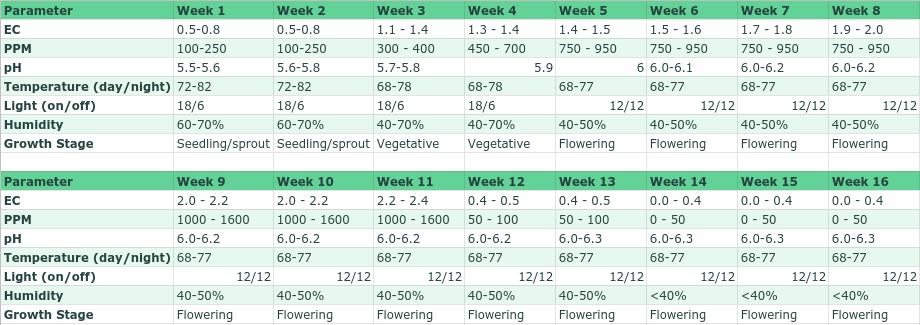
Choose Your Strain
Out of any plant grown commercially, and by hobbyists, cannabis has an impressive list of different strains. Everybody has their favorite for whichever reason, but not every strain is as easy to grow. The two main types of cannabis strains are Indica and Sativa. Indica strains are known as the ‘body’ effect strain, while sativa strains are known for their ‘mind’ effects.
You might choose a specific strain because you prefer it, it’s more profitable, or any other reason. One thing to keep in mind is overall difficulty. If it’s your first time attempting to grow hydroponic cannabis, it’s best if you start with an easier strain. Once you get used to growing cannabis, and know how to produce a good crop, go ahead, and try something more advanced.
In general, Indica strains are easier to grow hydroponically. Indica plants grow bushier, and don’t get as tall as sativa plants do. Not only that, Indica varieties are just plain easier to grow. The majority of Indica strains contain less THC than sativa strains.
If you want a more concentrated strain, but like how easy to grow Indica is, choose an Indica dominant hybrid.
Reasons to choose Indica for beginners:
- Shorter, less space requirements
- Easier care
- Less lighting needed
- Even hybrid varieties are easier
- More manageable for growing hydroponically
- Best way to begin to grow hydroponic cannabis
How to Start Your Plants
You can grow hydroponic cannabis from seeds, and that’s how a lot of people start. Like any other plant though, cannabis seeds have varying traits. The seeds may come from a hardy, exceptionally potent plant, but there’s no guarantee they’ll turn out the same.
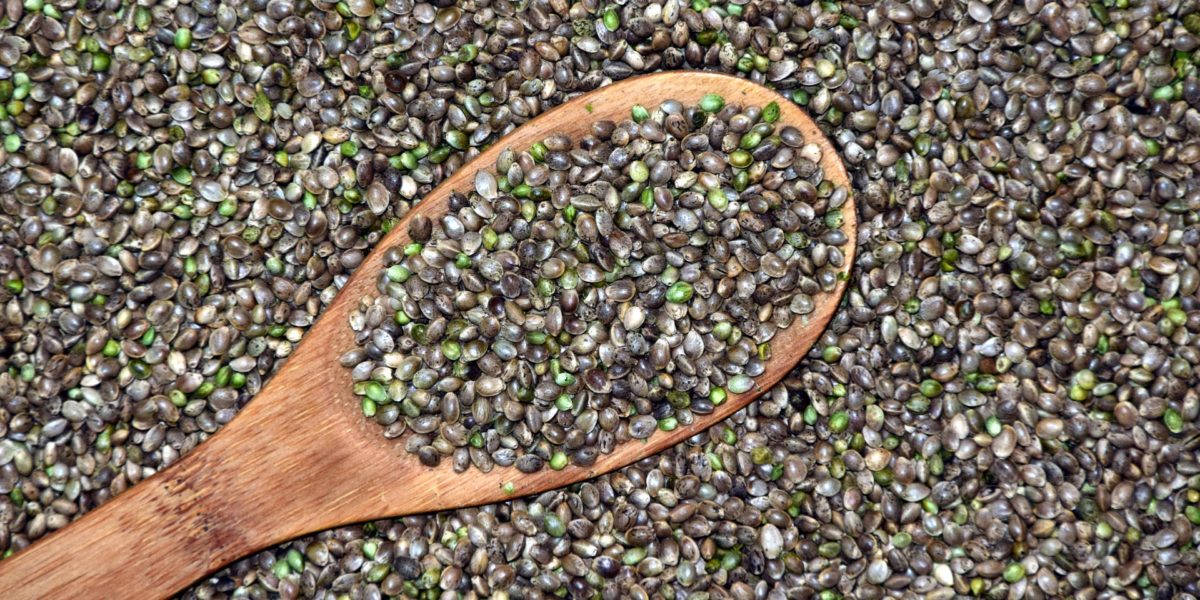
Another problem with seeds?
About half of typical cannabis seeds are male. Naturally, half is also female, but you take the chance that you’re raising male plants. Keep in mind that cannabis (for consumption) is cultivated only with female plants. Nobody wants to waste nutrients, energy, and effort on growing a plant they can’t really use.
One way growers get around the problem of male seeds is by using feminized seeds. Feminized seeds are basically put through a process wherein they’re guaranteed to sprout female plants. If you want to use feminized seeds to grow hydroponic cannabis, make sure you get them from a reputable source.
The most reliable way to get female cannabis plants (and good quality stock) is by using clones. Clones are basically genetic duplicates of the ‘donor’ or ‘mother’ plant they come from.
Why use clones?
- They start the growing process faster
- Clones from female plants are guaranteed to be female too
- Duplicate the same traits the donor plant possesses
- No guessing or accidentally growing male plants
- Clones can continuously produce identical plants
For more info about cloning, check out this guide.
A Detailed Grow Guide
With the basics covered, we can move onto why we’re really here. The grow guide. We’ll go over everything you need to know about to grow hydroponic cannabis, from the very start through harvest.
Seedlings and sprouts need very little. When your plants are young, you can use less intense grow lights, like T5 or CFL fluorescents. Some growers choose to hold off on giving their plants nutrients until they are larger, and ready to go in the hydroponic system. You can still give your little plants nutrients but be careful about giving them too much.
If you give sprouts and seedlings nutrients, dilute your nutrient solution to about 10% of the regular concentration. You do not want to end up damaging a developing root system.
Once you see your plants develop bigger, more stable root systems, look at their leaves. After they grow a few ‘true’ leaves, you can start treating them with more nutrients.
While your plants grow
One of the harder parts of growing cannabis is how the weekly requirements change. Luckily, those changes aren’t drastic most of the time. Yes, pH and nutrient concentration slowly rise, both those are pretty easy to keep track.
Top tip: keep detailed logs while you grow cannabis. If there’s a problem, you can get a better idea of where it started. You can also avoid past problems with new plants.
While the pH doesn’t rise dramatically, the slight increments require a certain level of accuracy. When you are growing cannabis, it’s better to use the most accurate testing tools possible. Keep in mind you will need to test your water frequently. pH test strips can be difficult to read, and they aren’t as accurate as a meter.
You need to test the concentration of your nutrients in the water too, which is the EC. A dual EC and pH testing meter is ideal because it’s fast and accurate. Not only that, it doesn’t run out like the test strips you dip into the water. You can keep using it to test for nutrients and pH as long as it works.
The vegetative stage isn’t as long as with other plants. In fact, the sprouting and vegetative stages only take up about a quarter of your total grow cycle.
Prior to flowering, keep plants on a lighting schedule with 18 hours of light and 6 hours of darkness. As we mentioned, it’s okay to use fluorescent grow lights while plants are sprouts. When they begin the vegetative phase, they need more intense light.
What you need to know about grow lights for cannabis through vegetative stages
While fluorescents are fine for really young plants, HID (high intensity discharge) and LED (light emitting diode) grow lights are ideal for vegetative stages. LED grow lights are newer, and more energy efficient. Still, they come with a higher startup cost. HID grow lights are the traditional choice, cost less, and provide plenty of intense light. However, they also produce more heat, so they need to be higher up from plants in a room with plenty of ventilation.
You can learn more about grow lights here.
LED vs. HID
Most LED lights allow you to switch between blue, red, and full spectrum light. HID lights come in two main varieties, HPS (high pressure sodium) and MH (metal halide). Metal Halide lights produce light on the blue end of the spectrum, while High Pressure Sodium produces on the red end.
If you choose to go the route of HID lights, use MH through the vegetative stage, and switch to HPS in the flowering stage.
Pay attention to wattage, but also light output. Not only does it determine how many plants you can grow, but also how far away from the plants the lights should be. While you won’t always worry about energy consumption when growing other plants, you might now. There are a ton of different wattages to choose from, but most HID lights go from 250 watts up to 1,000 watts. There’s also a certain amount of light you need to provide per plant to keep them growing.
Use this chart as a reference for your grow lights.
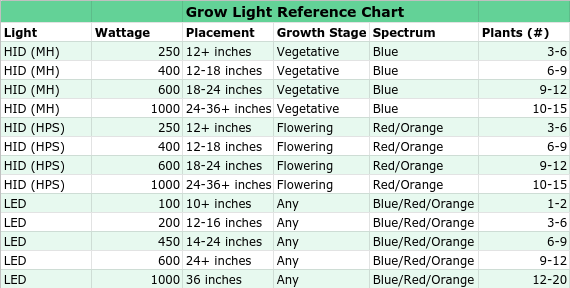
Remember, no matter what type of lights you use,
the day/night cycle doesn’t change when you grow hydroponic cannabis.
Time to Flower Your Plants
Outdoors, cannabis plants begin flowering on their own, using cues from natural light and temperature. When you grow hydroponic cannabis indoors, you have to prompt the flowering stage (unless you’re growing an auto flowering strain, which we’ll cover later on).
Using a flowering nutrient solution won’t start the flowering stage. Neither will much anything else, aside from changing their light cycle. Once your plants are ready, start giving them 12 hours of light, and a strict 12 hours of darkness. It’s always tempting to peek at your plants but avoid it. Light leaks can impact your plants’ ability to flower and delay your harvest.
How can you tell when your plants are ready?
- They have a healthy, uniform green color.
- Foliage is sturdy and strong, no wilting or curling.
- Plants don’t show any signs of stress.
- There is no chlorosis (yellowing) or other discoloration.
Once you start the 12/12 light cycle, start giving your plants a flowering nutrient formula. These kinds of nutrient solution have less nitrogen, but they’re higher in phosphorus and potassium. Plants need a flowering formula for at least the first month of the flowering stage. As they begin this stage, you also need to switch your grow lights to the red/orange end of the spectrum.
If you use LED, switch to the full spectrum or red light settings. If you’re using HID grow lights, change the bulbs from Metal Halide to High Pressure Sodium.
A note about auto flowering strains
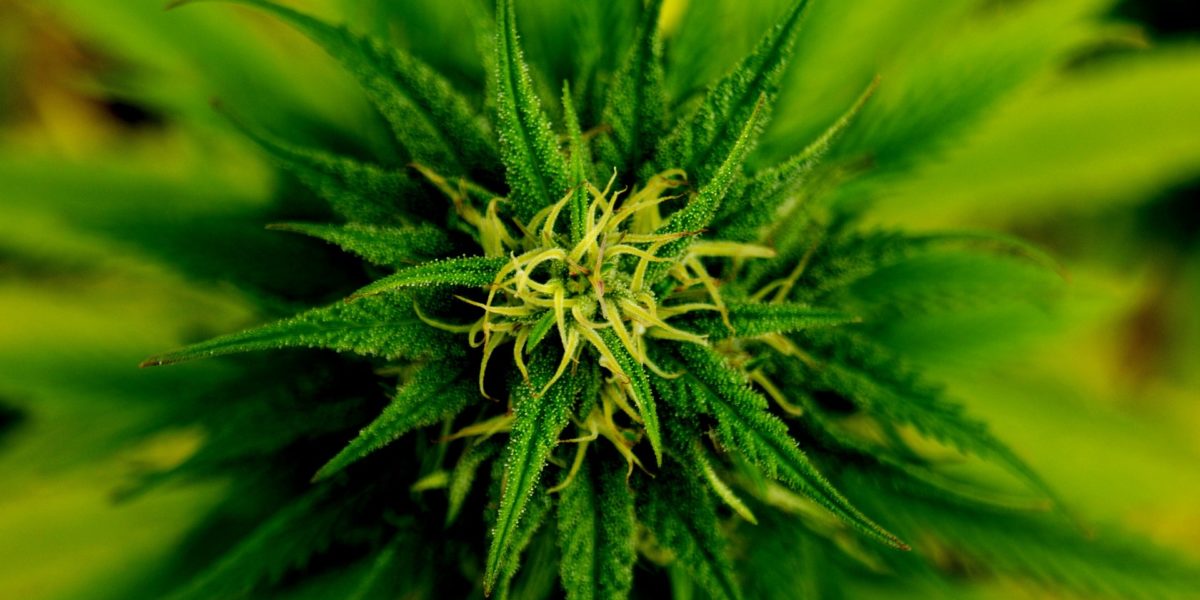
Auto flowering strains can be great when you don’t have as much control with
your lighting. Or, if you don’t want to worry about making sure you start flowering on time. Basically, they flower in their own time.
They spend up to a month growing in their vegetative stage, and then begin flowering. Auto flowering plants will spend around a month flowering before they are ready for harvest.
No matter what you do with lighting, they still flower after about a month. That can be a good thing, but if you’re correcting nutrient or stress issues, it can be a problem. You cannot stop them from flowering while you fix other problems.
Because the beginning of the flowering stage directly impacts your harvest, it can result in a lower yield, or hermaphroditic plants.
Tips for flowering cannabis plants
Beginning the flowering stage can be as easy as changing the light cycle. Doing it successfully enough to get potent buds and a decent yield is another thing entirely. Follow these 5 tips to flower cannabis and get a good harvest.
- The first few weeks are the most important. When your plants start flowering, the first few weeks are everything. Leaves and stems are developing, and you may see a marked increase in height. Some plants even double in size during this period. Many plants don’t produce buds until the 4th week. The first three start the baseline for your harvest. Don’t take any chances during this time and pay very close attention to your plants.
- Train early. Start training your plants when they begin the flowering stage, while stems are still pliable and flexible. If you wait too long to ‘train’ your plants, their stems are too woody, and it’s difficult. Low Stress Training is one of the top options. Use a flexible, smooth (not sharp) material like covered wire or pipe cleaners to wrap around the upper stems. Gently pull the stems down and secure them. Training keeps plants manageable, but it also allows light to reach more of the plant.
- Always check for males and hermaphrodites. Unless you use guaranteed feminized seeds, you can have male plants or hermaphrodites pop up. Even if you use a clone from a female plant, stress can cause it to become a hermaphrodite. How can you tell if your cannabis plant is a hermaphrodite? Balls and bananas. Basically, instead of just growing flowers (aka buds), there are pods of pollen or banana shaped (and colored) stamens there. Get these plants out of your hydroponic grow room ASAP, or risk pollinating and ruining your female plants.
- Be patient, and don’t peek. Flowering is unquestionably the most exciting phase of cannabis growth. But seriously, try your absolute best not to peek and mess up the light cycle. Patience is the keyword behind successful harvests. Don’t harvest until your plants are ready either. It’s far better to wait a week longer than harvest a week early.
- Watch out for pests. Everything is going great, and there’s only a week or two left until harvest! But then, you notice webbing on some of your plants. And that is a dreaded spider mite infestation. While spider mites are one of the worst, they are far from being the only pest that likes taking up residence in marijuana plants. Infestations are known for growing quickly. Once they get so far, your harvest is ruined, and you’re left sterilizing your grow room with no viable buds. On the bright side, if you catch a pest problem right away and take care of it, you might be able to salvage some plants.
Ready to Harvest?
The most important part of harvesting any cannabis plant is knowing when to do it. Yes, you can follow the general timeline and assume the plants are ready to harvest after a couple of months. Or, you can look at your plants and make sure. Clipping the buds too early isn’t necessarily horrible. But you could be missing the maximum potency (as well as best flavor and aroma).
Timing isn’t the only thing to pay attention to. Before you harvest, you need to take care of some key tasks, and make sure your plants are ready.
While you may be excited to reap the fruits of your labor, you should still keep the lights on a 12/12 cycle until you harvest.
Flushing plants
Rather than keeping the same nutrient schedule, most growers ‘flush’ their plants before harvesting. What is flushing? It’s when you give your plants only fresh, clean water. You don’t need to add any nutrients. Flushing your marijuana plants allows them to use up the nutrients stored in their stems and root systems. Nutrients aside, it also improves the overall flavor of your buds.
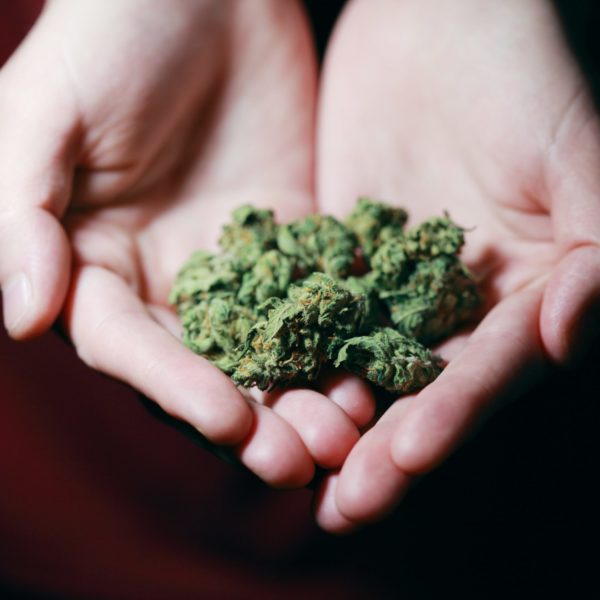
When you use soil to grow cannabis, flushing is a long process. It can take up to two weeks if you’re growing in soil! Another advantage of using hydroponics to grow cannabis is that it takes much less time to flush your plants. Really, you only need to do it for a few days. If you aren’t using a hydroponic system, per se, but you’re using growing medium and adding nutrients with water, flush plants for a week.
When is cannabis ready to harvest?
So, your buds are well formed, and definitely fragrant, but how do you know if it’s time to harvest? Check for these things before you start clipping:
- There are some orangish trichomes left, but not too many.
- The clearest trichomes are turning a creamy white color.
- The ends of trichomes have a bulb like, or mushroom cap like appearance. (Use a magnifying glass to check)
- You can see solid, well defined buds. The ‘hairs’ are curled in and not as light in color as in the middle of flowering.
How to Harvest
Harvesting cannabis is different from other crops you can grow hydroponically. After all, when you pick tomatoes you don’t need to cure and dry them. Plus, when you harvest also plays a part in what kind of effect the cannabis has. If you harvest when trichomes are a milky color, there are more psychoactive properties. Later in the flowering stage when trichomes are an orange or amber color, there’s more of an effect on the body.
Once your plants are ready, go ahead and start harvesting. You’ll have to cut branches, so use a tough pair of scissors or gardening shears.
Note: you won’t want to use these for trimming, since they can get damaged by tough branches.
Try to cut branches at a medium size. Too big, and they’ll be difficult to work with. Before you trim or dry the colas and flowers, get rid of fan leaves. You should not need scissors. Just use your hands and pull them off.
Note: “Colas” are the main stems of marijuana where you can see buds growing.
Trim off the little leaves sticking out around your buds. These are often called sugar leaves. Once that’s done, tie up your colas and hang them to dry. Drying should take at least a few days.
Most crops are dry within a week. But, if you have high humidity, it may take longer. Try to keep branches from brushing against each other while they dry.
Some growers prefer to ‘wet’ trim, while others swear by dry trimming. Either way is fine, but if you have high humidity, wet trimming is the better choice. That’s because it prevents mold from growing on plants grown indoors and in hydroponic systems, in particular.
Important Considerations
So, now that you have an exhaustive guide to follow to grow hydroponic cannabis, you’re almost ready. There are just a few other important considerations about growing cannabis to consider.
First, always check your local laws to make sure you can grow legally. If you plan to grow hydroponic cannabis commercially, there are even more regulations to follow. For example: some states require you to sponsor a medical card holder. This means that you grow primarily for them, at least in theory. The number of sponsored card holders you have determines the amount of plants you can grow. I.e., there’s a certain number of patients per plant. When you harvest, a certain weight goes to each card holder. The rest may either be used personally, or sold to a dispensary, depending on local regulations.
These are just examples, but it’s important to cover your bases.
One other thing to mention: the smell. Cannabis is probably the most ‘fragrant’ plant you can grow hydroponically. Even if it is legal in your area, you may not want your plants skunking up your whole home.
Using a carbon filter with a good ventilation system is your best bet. There might still be some odor, but the filter makes a huge difference. When you harvest and trim, the smell can get even stronger. Some growers use air purifiers and carbon filters when they are trimming and finishing their plants too.
Frequently Asked Questions
If cannabis ‘grows like a weed’ why does it require so much care?
Cannabis, or marijuana, really doesn’t need that much care to grow. In fact, in many places it doesn’t need any help at all. It can just grow like any other weed. But…The marijuana plants that grow wild are not what you will see on offer at your local dispensary.
If you’ve heard the term ‘ditch weed’ you know what we mean. Originally, the term referred to marijuana plants growing outdoors like any other weed. Cannabis grown commercially is like a fine wine, with different nuances, characteristics, and strains (or types). And ditch weed is like grapes. The reason it requires so much care is because you’re growing specific strains and trying to optimize certain traits.
Can I sell what I grow without getting in trouble?
At the time of this writing (hey, things could change) it depends on where you live. While the laws about cannabis vary in many European countries, and everywhere else, the laws vary by state in the USA. More than half of the states allow marijuana use, by adults, for medical purposes (34, actually). Around 11 states allow adults to use it recreationally and/or grow it at home (with or without restrictions for personal or medical use only). It’s important to understand that despite your own state laws, cannabis is still a prohibited substance on the federal level.
*For an exhaustive look at cannabis legislation in the European Union, look at this report from the European Monitoring Centre for Drugs and Drug Addiction (EMCDDA).
What are the best cannabis strains to grow for beginners?
You can count on an Indica (or Indica heavy hybrid) for an easier grow, especially in a hydroponic system. White Widow is a great hybrid strain to start with, even if it takes a week or two longer to harvest. It has fairly high yields but doesn’t get very tall. As a bonus, it’s known for great flavors and strong effects. Blue Dream is another hybrid that’s popular, and easy to grow. It’s easy to find, and has resistance to root rot and powdery mildew, making it ideal for humid areas. If you’re really determined to grow a sativa strain, go for Cinex. It doesn’t get as tall as other sativa plants, but still gives big yields. Bonus: it has inbred resistance to common molds and mildew, so it’s a hardy strain too.
